TRI CLOVER FITTINGS
GENERAL INFORMATION
What Is A Tri-Clamp Fitting?
Alternatively referred to by the original brand name – Tri-Clover. This is a sanitary fitting with a smoothed polished finish. The whole idea behind sanitary piping is to reduce the bio-burden in the fluid path. The common features of sanitary fittings are crevice-free, polished surfaces, and easy cleaning. The fitting has a smooth internal joint.
How the Tri-Clamp system works
Tri -Clamp fittings have flanged ends that are held in place by a C-shaped clamp. A single seal sits between the 2 flanges ends that are clamped together. The clamp also provides structural strength to the pipe sections.
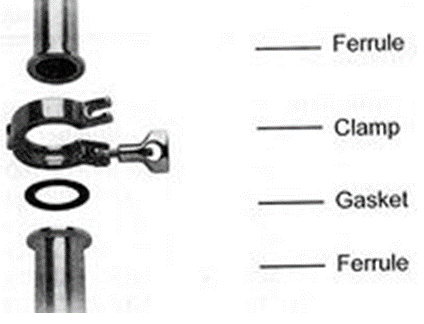
Some key differences
- In the Tri Clamp set up the gasket sits between the clamping points.
- There are no ball-sockets like in conventional quick disconnects. You can see every surface that meets the fluid moving through the set-up.
Advantages of using Tri-Clamps
- Easy to use
- Flexible system
- Easy maintenance
- Great where optimal cleaning is required.
- Suited for processes where easy replacement of seals is necessary.
- Sturdy system.
- The combined lip flange and gasket do not impede liquid flow.
- Leak-proof seals
- Superior corrosion resistance, low cost and long service life.
- Accessible for inspection and maintenance without the use of tools.
- Equipment surfaces free of niches.
How to size a Tri-Clamp
The size of the fitting is determined by measuring outside diameter (OD) of the tube and not the outside diameter (OD) of the flange-end itself. The diameter of the flange-end tends to be about 1/2" (15mm) wider than the OD of the pipe. For example, the 1.5" OD tube has a flange-end OD OF 1.984" For further information, clarification and Tri Clamp sizing table click here
Gaskets & Seals
Silicone seals are the standard seal supplied.
Various other seal options are available including:
- EPDM, Ethylene Propylene
- Nitrile (Buna-N)
- White Nitrile (White Buna-N)
- Viton
- PTFE
Common Applications for Tri-Clamp Fittings
Sanitary fittings have been designed for use in areas that require sterile or clean processing. They extensively used in food processing, dairy pipe-lines, breweries, pharmaceutical and bio-pharm industries.
Standards
All fittings comply with ASME 3A, DIN, ISO and SMS standard.
Tri-Clamp Ball Valves
Tri Clamp ball valves are available in Stainless Steel 304 or 316. These are full port, offering unobstructed flow. A TC ball valve is often placed on the ends of clean in place (CIP) piping. Used to stop or control flow for utmost hygiene.
Our standard or economy ball valves can handle 250 PSI, encapsulated models are rated up to 1000 PSI.
These sanitary salves come in a variety of versions including the Tri-Clamp Ball Valve, the Tri-Clamp Butterfly Valve and the Tri-Clamp Pull Trigger Butterfly valve.
Technical Specifications
Tri Clamp Fittings
There are many different combinations of clamps and fittings. Please contact us for technical specifications specific fittings required.
Tri Clamp Gasket Dimensions for TC Check Valves
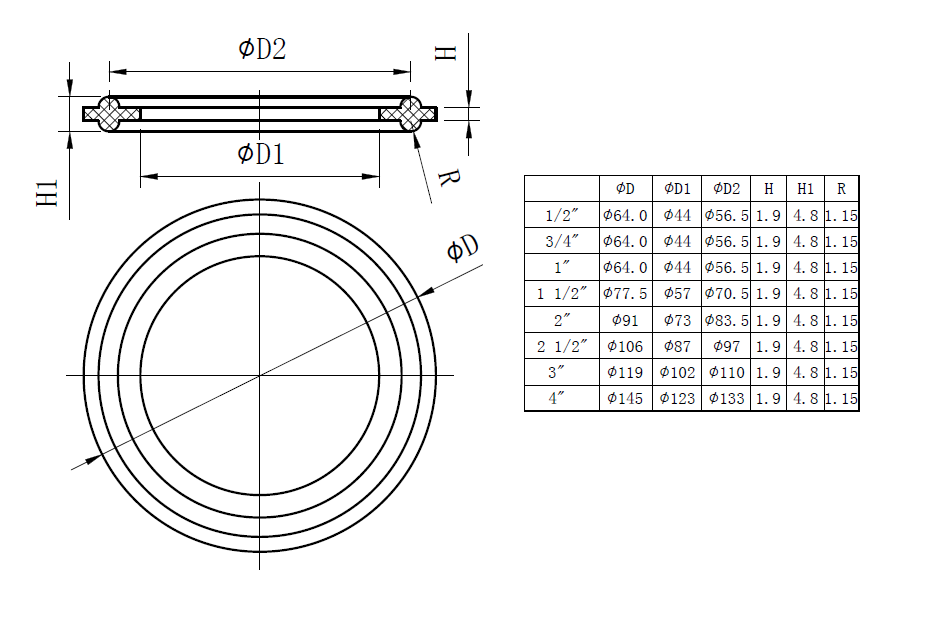
Tri Clamp Ball Valves
Tri Clamp Ball Valve – Economy Style
| Material | Stainless Steel 304 |
|---|---|
| Seal | Teflon (PTFE) |
| Thread | Tri-Clover Connections |
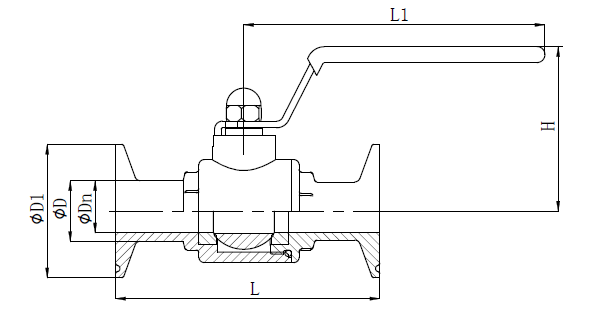
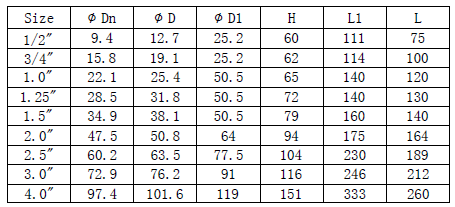
Tri Clamp Ball Valve - Ezy Clean (not currently stocked)
| Material | Stainless Steel 304 |
|---|---|
| Seal | Teflon (PTFE) |
| Thread | Tri-Clover Connections |
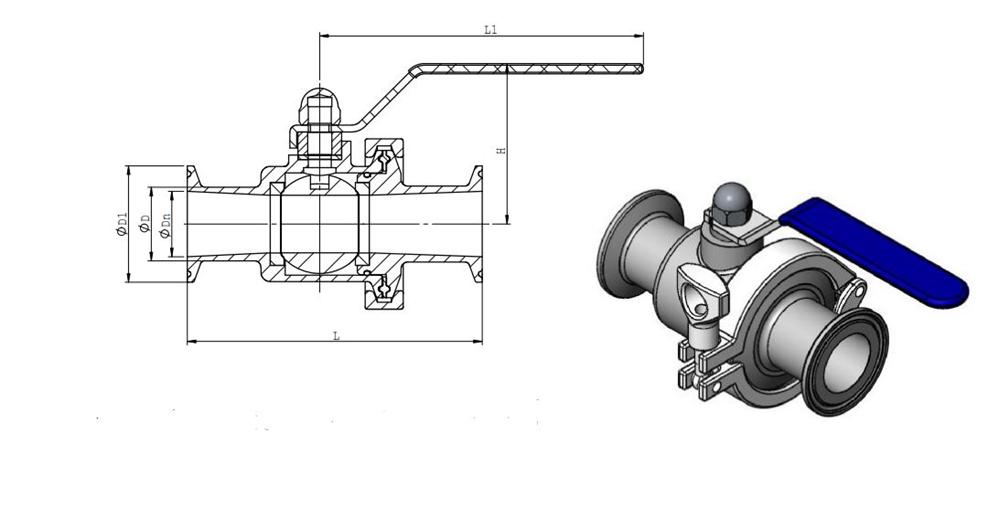
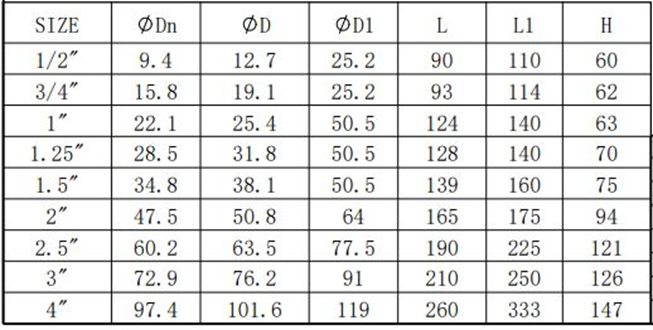
Tri Clamp Ball Valves - 3 Piece (Not currently stocked)
| Material | Stainless Steel 304 |
|---|---|
| Seal | Teflon (PTFE) |
| Thread | Tri-Clover Connections |
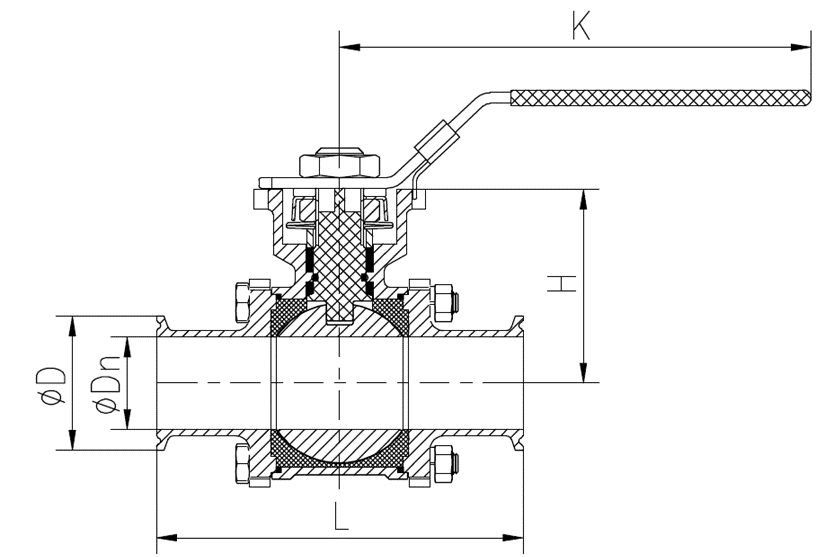
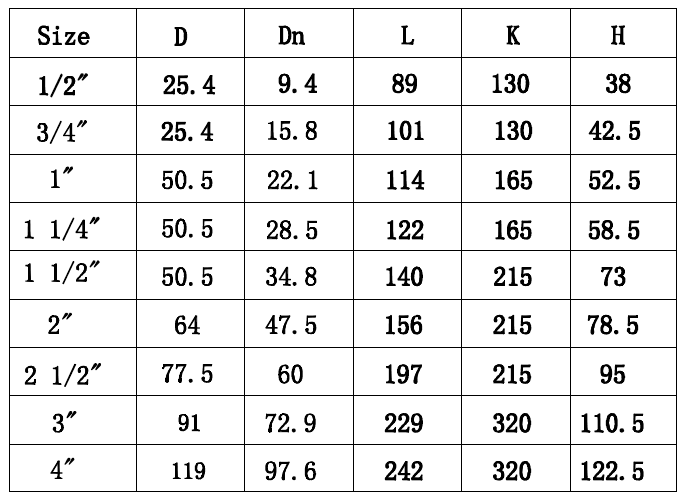
ButterFly Valve – Squeeze Trigger
| Material | Stainless Steel 304 |
|---|---|
| Seal | Silicone |
| Thread | Tri-Clover Connections |
| Technical Parameter |
|---|
| Product Standard: 3A |
| Max Pressure: 1.0MPa (10Bar) |
| Min Pressure: 0.02Mpa (0.2Bar) |
| Temperature range: -5°C ~ +95°C |
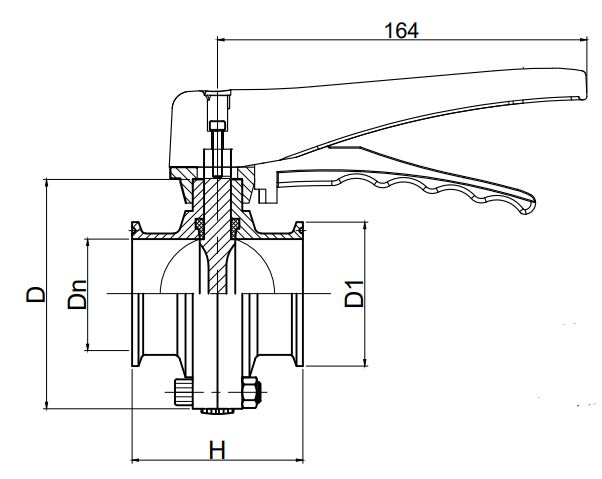
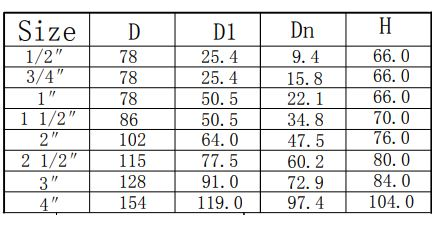
Common Questions
How do you size a Tri-Clamp?The size of the fitting is determined by measuring outside diameter (OD) of the tube and not the outside diameter (OD) of the flange end itself. For more information click here.
Can one overtighten the clamp?This is possible. It’s important to remember to simply let the gasket do its job which is to create a leak-proof seal between the two flanges. Tighten sufficiently to create the seal.




